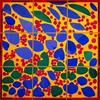Zeit Contemporary Art Explores the Captivating Power of Nature in Art
- NEW YORK CITY, New York
- /
- April 28, 2021
Zeit Contemporary Art is pleased to present Seeing Nature, an online viewing room through July 15th, showcasing modern, postwar, and contemporary works related to being in, looking at, and interacting with nature. These artists represent their personal emotions and associations regarding the natural world; as revealed, the experience can result in a range of feelings, alternately joy, awe, wonder, peace, spiritual resonance, or even fear. As nature also invites introspection, many artists included use nature as a way to deepen into their subjective world. Also, in light of the current climate change crisis as well as cultural and geographical specificity, embracing representations of nature is a way of taking a political stand. As such, this exhibition aims to present a variety of mediums, from works on paper to photography, that are engaged with the experience of nature from Modernism to our contemporary world.
Depictions of nature are inextricable from the purpose of art to reflect on beauty, justice and humankind. However, it was only with Romanticism and, on its heels, Impressionism, that artists’ personal emotions and subjectivities regarding nature came into play. Impressionism was inspired by the joy of being in nature and sought to elevate the genre; the movement is marked by an emphasis on painting en plein air with spontaneous, rapid brushstrokes in order to capture the changing effects of light and color. Paul Gauguin is particularly notable in that while he started out painting as an Impressionist, he ultimately shifted to use color expressively in his landscapes. He was an important precursor for Modernism, and postwar painting in North America is predominantly characterized by abstraction inspired by nature. Joan Mitchell, one of the artists included in this project and an exponent of the second generation of Abstract Expressionism, stated: “I paint from remembered landscapes that I carry with me—and remembered feelings of them, which of course become transformed.”
Artists’ depictions of their experience in nature continue to have a political dimension. While Ansel Adams was so fervently passionate concerning nature’s beauty his experiences bordered on spiritual, his work also has a political component in that he captured dwindling areas of wilderness in order to extol his fellow Americans to protect and preserve the landscape he so loved. The work of other artists is also a statement regarding the difficulty of mediating one’s identity with regard to gender, identity, and sexuality, while still rooted in nature. For instance, Bryson Rand, believes that “…there’s a connection between the incredible beauty and strength the planet holds and that queer people hold and historically have been able to maintain despite whatever sort of nonsense was happening around them.”
As this online viewing room reveals, artistically, human subjectivity concerning nature has a broad range. While some artists carry on the modernist legacy of representing their delight and love for nature, others utilize the representation of nature as a way to explore identity in today’s world. Ansel Adams perhaps sums up the aims of Seeing Nature best: “The moods and qualities of nature and the revelations of great art are equally difficult to define; we can grasp them only in the depths of our perceptive spirit.”
Artists
Ansel Adams, Martín Chirino, Paul Gauguin, Benita Koch-Otte, Robert Mapplethorpe, Joan Mitchell, Bryson Rand, Res


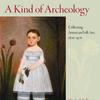



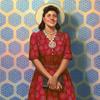
_Infinity_by_Santiago_Medina_PhotoCr100x100_c.jpg)


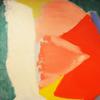


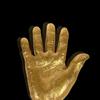
10100x100_c.jpg)

